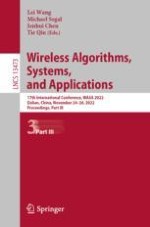The three-volume set constitutes the proceedings of the 17th International Conference on Wireless Algorithms, Systems, and Applications, WASA 2022, which was held during October 28-30, 2022. The conference took place in Dalian, China.The 95 full and 62 short papers presented in these proceedings were carefully reviewed and selected from 265 submissions. The contributions in theoretical frameworks and analysis of fundamental cross-layer protocol and network design and performance issues; distributed and localized algorithm design and analysis; information and coding theory for wireless networks; localization; mobility models and mobile social networking; underwater and underground networks; vehicular networks; algorithms, systems, and applications of edge computing
